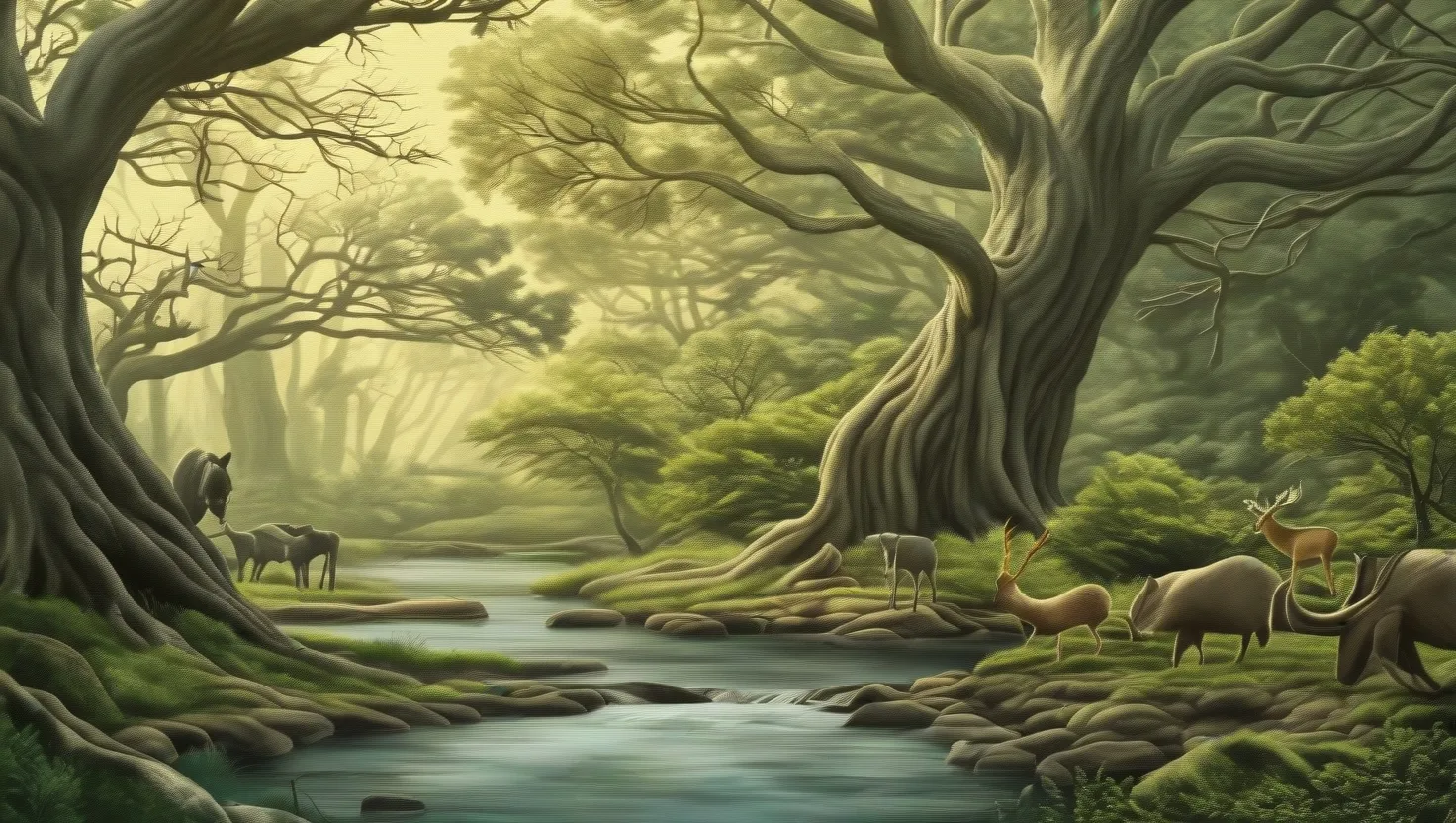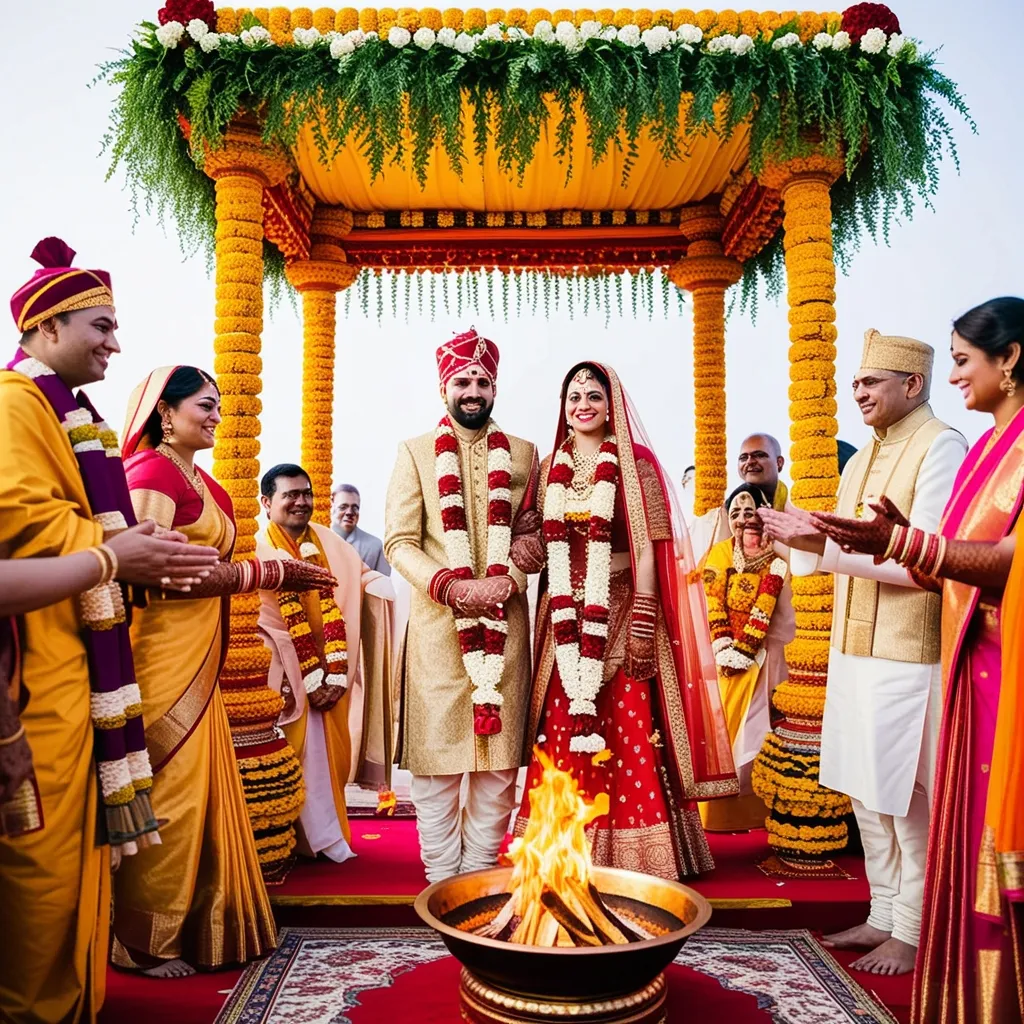Deep within the ancient Hindu texts, specifically the Yajur Veda, there exists a timeless and universal prayer called the Shanti Mantra. This isn’t just any prayer—it’s a profound call for peace and harmony that transcends individuals and speaks to the entire universe. The mantra’s essence is perfectly captured in the Vedic phrase “Sarve janah sukhino bhavantu,” which translates to “may everyone be happy.”
The Shanti Mantra from the Yajur Veda is like a poetic plea for peace in every facet of existence. It starts with a wish for peace in the heavens, the skies, and on earth. But it doesn’t stop there. It goes on to include peace in the waters, herbs, plants, and forests. Ultimately, it calls for peace among all people and rulers, creating a universal demand for tranquility.
What’s fascinating about this mantra is its expansive vision of peace. According to the Vedic sages, all of existence is interconnected. So, when peace is invoked in the cosmos, it also implies peace within the individual soul. The mantra’s broad reach is apparent in its appeal for peace in heaven, the skies, on earth, in waters, in plants, and throughout the universe.
The Shanti Mantra also emphasizes the harmony between nature and humanity. It seeks peace in all natural phenomena—on earth, in the skies, in the winds, in the oceans, and in the mountains. This isn’t just an empty wish but a nod to the interconnectedness of everything, a principle known in Vedic tradition as “Ritam.” Living according to this principle means following the path of righteousness (Dharma) and truthfulness (Satyam), uplifting every aspect of life.
The mantra’s beauty goes beyond its universal scope; it also speaks to us on a personal level. It’s designed to calm the mind, removing obstacles from daily life and rituals. By calling for peace in three realms—the unseen forces, earthly surroundings, and our internal self—it ensures that the mind remains undisturbed. This peace isn’t just about a lack of conflict but about achieving a profound sense of fulfillment and well-being.
The Shanti Mantra, when recited, serves as a sort of benediction full of rich imagery and a rhythmic Sanskrit cadence. Here’s how it goes:
“Om dyau shantir antariksham shantih prithivi shantir apah shantir oshadhaya shantir vanaspathaya shantir vishve deva shantih brahma shantih sarvam shantih shantir eva shantih sa ma shantir edhi Om shantih shantih shantih”
In English, it translates to:
“May there be peace in heaven, Peace in the skies, And peace on earth. May all the waters know peace, May all the herbs and plants know peace, May the great trees of the forest know peace. May all the forces of the universe know peace. The immense, transcendent reality is peace. May all know peace, Peace and only peace, And may that peace come unto me. Om peace, peace, peace.”
The essence of peace, as invoked in the Shanti Mantra, isn’t just a state but a transcendent reality that surpasses intellectual understanding. When true peace dawns, it frees us from pain and suffering. It’s this kind of peace that the mantra seeks for all beings. In ancient mythology, peace is often depicted as an attendant to Consciousness (Shiva), one that fosters enlightenment and well-being.
Reciting the Shanti Mantra isn’t just a routine; it’s a powerful act to restore order and purpose in our lives. It calms the mind and helps us align our lives. Invoking peace through this mantra creates harmony with our environment, other beings, and even within ourselves. This mantra can be chanted at the start of any practice or ritual to set a calming tone and ensure smooth proceedings.
The Vedic tradition, reflected in the Shanti Mantra, also places great importance on sharing and harmony among humans. Many Vedic hymns encourage sharing wealth and resources, seeing the act of withholding as sinful. The Rig Veda urges humans to share their fortunes with the poor and needy, while the Atharva Veda commands sharing comforts with others. This idea of universal harmony and well-being is integral to the Vedas.
In conclusion, the Shanti Mantra from the Yajur Veda is a timeless and universal prayer for peace and harmony. It mirrors the Vedic belief in the interconnectedness of all existence and stresses the importance of living in harmony with nature and humanity. By chanting this mantra, we not only ask for peace in the world but also bring calm to our minds and lives. This invocation is potent and can infuse our daily spiritual practice with order, purpose, and well-being.






